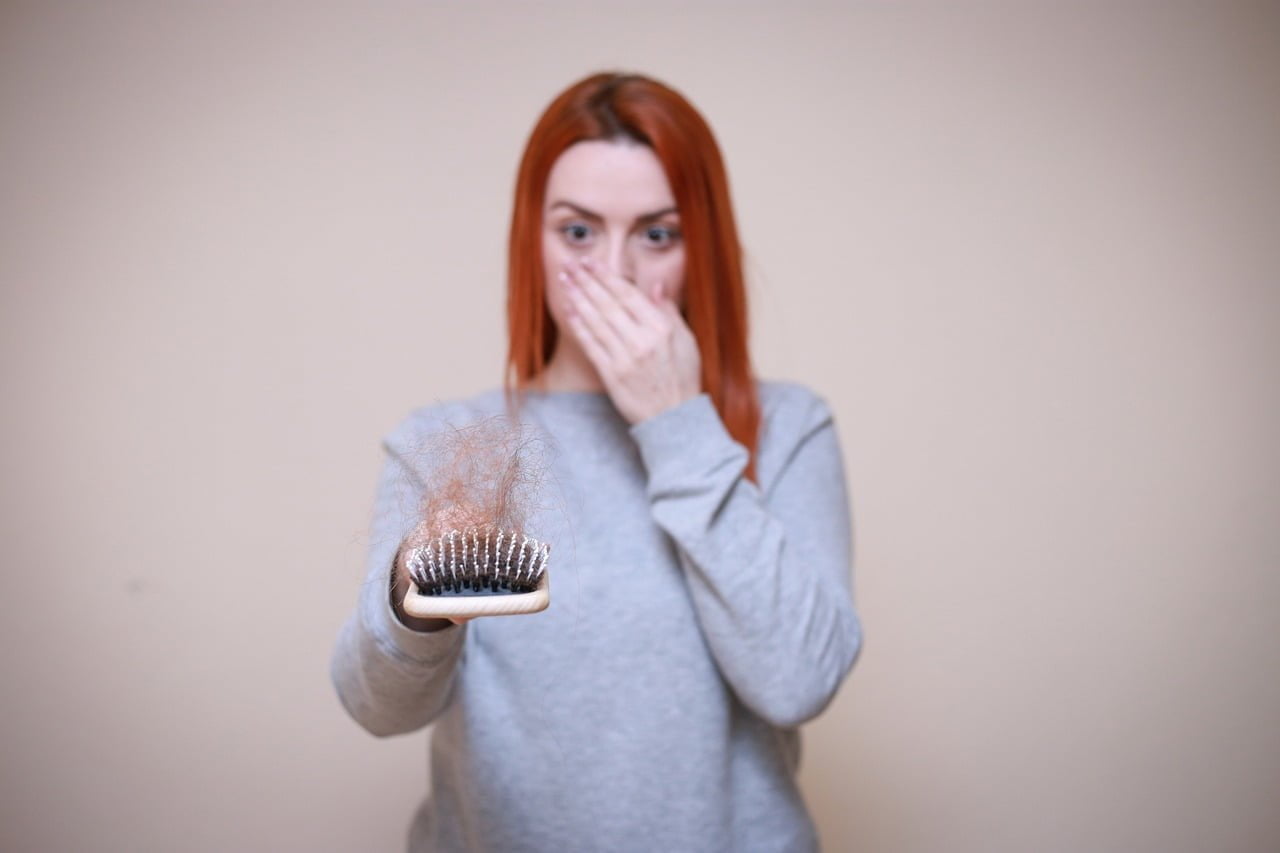Last Updated on: 12th December 2023, 01:23 pm
Hair loss, thinning hair or balding is known as alopecia and it can start at almost any age, especially in adulthood.
Some individuals suffering from hair loss in Singapore may even experience early signs from their late teens to their early 20s but most have a full head of hair without any thinning hair until they reach the age of 50s and 60s.
Male pattern hair loss and female pattern hair loss are different as these genders start losing hair from different parts of the head.
For men, they usually begin to lose hair from their temples — which creates an M shape receding hairline, which will then move to the top, then to the backs of their head before spreading to both sides. This is also known as male pattern baldness.
Of course, it is during this stage, that men experience excessive hair loss with limited hair regrowth. Therefore hair loss treatment is paramount at this stage, to prevent lost hair.
For women, hair loss usually begins from the top of the head and hair thinning is more common in areas of the head rather than having fully bald spots.
But let’s get into the most noticeable signs of balding, how to tell if your hair loss will lead to balding and what you can do about it if you need treatment for a condition that causes hair loss.
How to tell if your hair is thinning?
1) You have a receding hairline
This is a classic early sign of balding. For men, they will notice their hair begins to thin at the temples which creates a more prominent widow’s peak or a hairline that resembles the letter M or a horseshoe. Sometimes, the hair line can even recede or they can see hair thinning all the way across the head.
2) There are more hairs around your house and in the shower drain
It is normal to lose around 50 to 100 strands of hair in a day. However, if you begin discovering way more hair loss on your pillow when you wake up that was never there before or you see a much larger chunk of hair in your drains, this is a sign that you are losing way more hair than the normal hair loss everyone has in a day.
3) The hair around your crown is thinning
This is another common early sign of male pattern hair loss but women also usually have hair loss that begins from this area.
To check if you are losing hair in these areas, we recommend using a hand mirror to check or get someone to check it for you.
4) Your ponytail feels thinner
Sometimes, balding doesn’t begin at the hairline or crown but develops and advances at a steady rate along a larger area of your scalp.
This is sometimes called “invisible balding” because the hair loss is so gradual and balanced it may be hard to notice until nearly half the hair is lost.
5) You look different in photos even though you wear your hair the same
If you aren’t sure that you are losing hair, you can compare a current photo of yourself with past photos taken with the same hairstyle, with the same lighting and at a similar angle.
This will give you an objective perspective on whether you are actually losing your hair or if your hair loss is still within the normal range.
6) Your hair stopped growing
Hair loss causes the hair growth cycle to shorten. The normal growth cycle lasts around two to six years and after the hair falls out, the cycle begins again with new hair growth.
If you realized that your hair used to grow at a much slower rate than it does now or it has stopped growing for a while, then you may be beginning the process of balding at its earliest phase.
7) Your hair stylist notices your hair falls
Even when you don’t have a regular hair stylist, they can usually tell when you are going through an abnormal hair loss.
If you have a regular hair stylist then they can tell you that your hair has changed and the volume has reduced.
Most hair stylists can see the receding hairline in the scalp especially when they section your hair to cut it.
However, visiting a hairstylist is one of the best ways to help with hair loss as they can come up with new hairstyles to hide your hair loss.
8) Your scalp itches
Itchy scalps can contribute to hair loss and usually occurs because of a buildup in sebum on the scalp or skin conditions such as folliculitis, psoriasis, seborrheic dermatitis or ringworm of the scalp. Fungal infections can also cause itchiness.
Although itchiness does not cause hair fall, itchiness will end in you scratching your scalp which can end in damaged hair follicles.
If you have consistent scalp itchiness that just won’t go away, we recommend getting professional medical advice to help you.
Other types of hair loss to lookout for
There are some types of alopecia that can happen as a result of genetics, physical injury or an underlying medical condition that causes thinning hair or hair loss that create bald spots.
Examples of other types of hair losses are:
1) Alopecia areata
This type of hair loss starts with a small, circular area of sudden hair loss that appears without any symptoms. Other than the scalp, facial hair and eyebrows can also be affected along with hair loss on other parts of the body.
2) Telogen effluvium
This type of hair loss usually happens after a stressful event such as childbirth, a hospitalization or a new medication. You can reverse hair loss once the stressful event is over and you have calmed down.
3) Tinea Capitis
Tinea capitis is a fungal infection on the scalp that can cause small localized scaly spots on the scalp that may also have pustules. This can result in permanent scarring hair loss.
4) Cicatricial alopecia
This is a general term referring to hair loss that creates permanent scarring. The hair follicles left behind are destroyed and scar tissue forms which prevent hair from growing in that area permanently.
5) Nutritional deficiency
If your body is lacking a sufficient amount of protein or iron, among other vitamins, it can result in hair loss. However, a true vitamin deficiency is very rare therefore it is important to get a thorough medical check-up before taking supplements.
6) Thyroid conditions
A problem with your thyroid is a well-known cause of hair loss. Doctors often recommend checking this if you have hair loss that appears to have no underlying cause.







